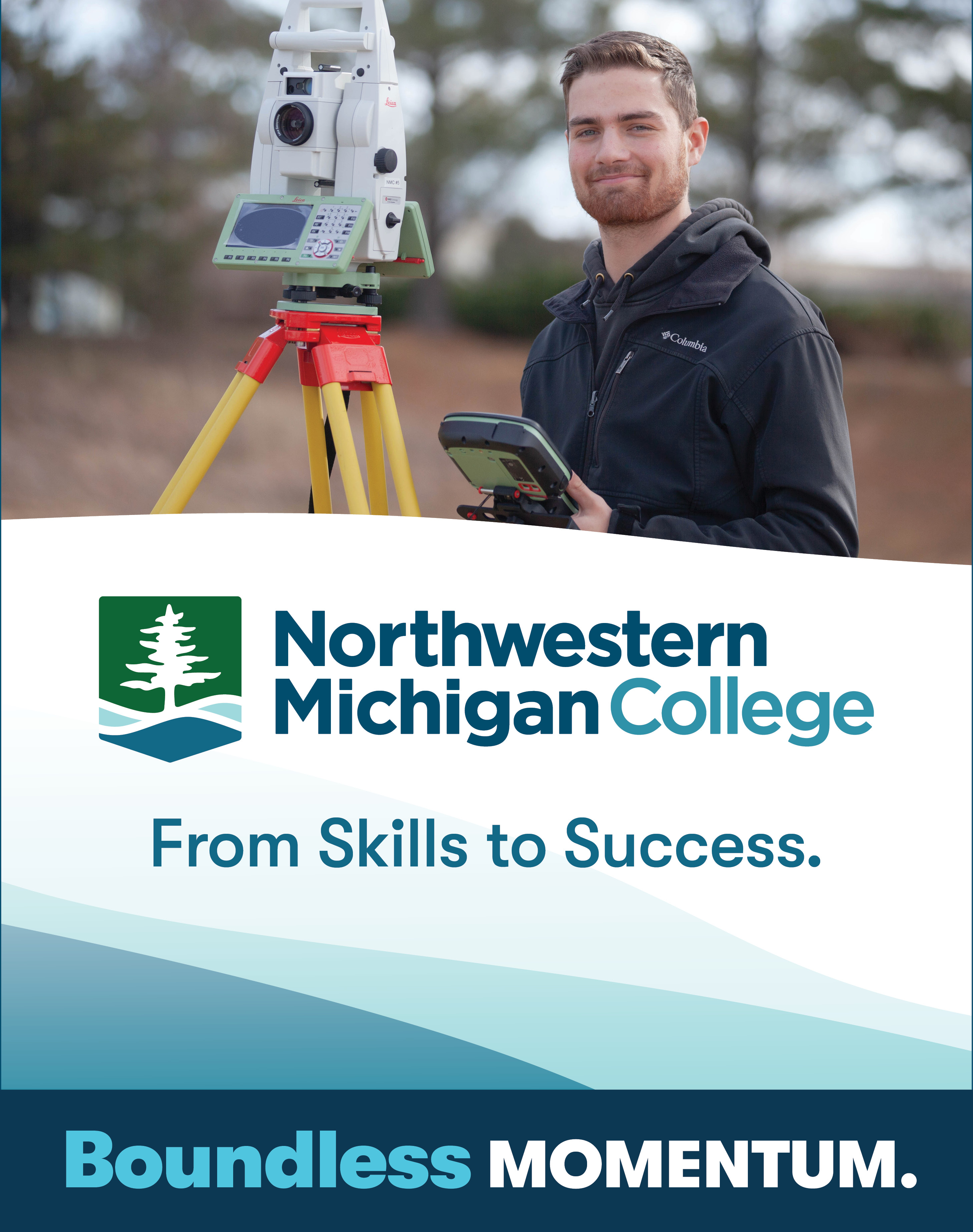
Key Takeaways from City’s Draft Master Plan
By Beth Milligan | July 8, 2024
How much of Traverse City’s land is tax-exempt? Vacant? Used for parking? What about its population – how many residents rent versus own their homes? Are elderly versus young? Seasonal versus year-round?
The answers to those and other questions are covered in the city’s new draft master plan, which will be reviewed by city commissioners in a series of meetings starting tonight (Monday) ahead of the plan’s approval in September. The master plan – which guides land use and long-term decision-making in the city – will also be presented at a community open house July 18 from 12pm to 8pm at the Governmental Center. The Ticker looks at key findings from the draft and next steps.
Demographics
The Traverse City region is one of the fastest-growing regions in the state, though most of that growth is occurring outside city limits. Traverse City has an aging population, with people over 60 making up 29 percent of the population – an increase from 19 percent in 2010. The number of single elderly households (living alone and over 65) increased by 376 people from 2010.
While education and median household income levels are increasing overall (the latter increased 23 percent from 2010 to 2020), women still make 80 cents for every dollar men make in Traverse City – and up to 35 percent of families are struggling to afford basic needs. The city’s declining poverty rate on paper could be deceptive, the draft master plan warns. “While Traverse City has experienced decreasing poverty rates across numerous demographic groups from 2010 to 2020, other communities within the region observed the opposite trend – which points to the possibility of impoverished families being ‘pushed out’ and migrating to surrounding jurisdictions,” the draft states. “For example, Garfield Charter Township is located on the southern border of Traverse City and has both the highest rate of poverty in the region as well as the greatest increase in residents living in poverty over the last decade.”
Sixty-one percent of city residents own their homes, while 39 percent rent. Traverse City has a high number of renters compared to Grand Traverse County (23.5 percent) and Michigan overall (28.3 percent). “The decline in home ownership and subsequent increase in the city’s proportion of rental population is an indication that city residents have increasingly become priced out of homeownership within city limits and either seek residence elsewhere or pursue rental options in the city,” the draft plan states. Traverse City has the highest median home values in the region, which could explain the decreasing homeownership and also why a third of all residents – owners and renters – face “unaffordable housing costs.” (Read more about housing statistics from the draft master plan here.)
Traverse City’s prominence as a center for tourism and economic activity is reflected in both daily and year-round population fluxes. Between winter and summer, Grand Traverse County’s population fluctuates by 47 percent. At the August peak, it’s estimated 41 percent of Grand Traverse County’s population is seasonal – primarily due to tourism activity in Traverse City. Tourism represents 26.2 percent of the regional economy, totaling $2.6 billion annually. Meanwhile, the city also experiences a significant daily population influx, as 89 percent of the city’s workforce lives outside city limits and commutes in for work. Predictably, resident income levels are tied to wellness outcomes – 36.1 percent of households with an income below $75,000 do not have health insurance, and nearly 20 percent of all individuals aged 26 to 34 years are also uninsured.
Land Use
A full 43 percent of the land in Traverse City is tax-exempt, including Munson, TCAPS, NMC, city/county, park, church, and nonprofit properties. The remaining land breaks down into residential (36.6 percent), commercial (16.9 percent), and industrial (3.4 percent). Vacant residential land “accounts for slightly more than 100 acres and exactly two percent of all the land in the city,” while there are only 78 acres of vacant commercial land available (1.4 percent of the total land area) – “indicating that future commercial development is likely to be through redevelopments or increased density on existing commercial properties,” the plan states. Downtown, parking occupies 15 percent of the land area.
The draft master plan identifies several key areas – including those cited by residents who provided input during multiple public meetings and surveys conducted over the last few years – that are ripe for redevelopment in Traverse City. They include properties along Thirlby Field, Fourteenth Street, Munson Avenue, Eighth Street, Garfield Avenue, Woodmere Avenue, and East Front Street. The draft includes conceptual renderings of potential redevelopment, such as at the intersection of Woodmere and Eighth (pictured).
“The redevelopment of this area would serve as a connection between the two corridors that are currently separated by vacant properties and industrial buildings,” the plan states. “While the library does provide some transition between the Woodmere Avenue and Eighth Street corridors, another anchor would further cement the transition.” Residents overall said they’d prefer to see corridor growth that focuses on “mid-rise mixed-used developments that stay in context with the surrounding neighborhoods.”
Future Trends
Climate change is already and will continue impacting Traverse City, according to the draft master plan, creating a need to address infrastructure and plan for population migration. Rising temperatures will affect everything from the Great Lakes to Traverse City’s tree canopy – including many trees not suited to warmer temperatures, which could “could struggle and perish by 2085” – to local farming. “Projected changes in precipitation, coupled with rising extreme temperatures before mid-century, will reduce Midwest agricultural productivity to levels of the 1980s without major technological advances,” the plan cautions.
The city’s water and wastewater systems “require maintenance, prioritization, and funding,” according to the plan, though the regional wastewater treatment plant remains at only about 50 percent capacity. Green infrastructure is recommended for stormwater, but that will require “funding and staffing before implementation.” While Traverse City Light & Power is on track to be fully powered by renewables by 2040, the city needs to take proactive steps to diversify and strengthen its tree canopy, mitigate urban heat islands, update its Climate Action Plan (which is 15 years old), and more aggressively protect wetlands – with Grand Traverse Bay already losing nearly 50 percent of its pre-development wetlands. Northern Michigan could also see an influx of climate refugees, with sea level rise alone predicted to cause 13.1 million Americans to move by 2100. “As the climate changes and warms, the livability zone (human climate niche) will shift greatly north and range from the central Midwest to southern Canada, signifying a massive upheaval in where Americans live and grow food,” the draft plan states.
Traverse City’s draft master plan addresses numerous other topics, including neighborhoods, arts and culture, recreation, public health and safety, and community facilities and services. Transportation and mobility are covered in more detail in a new subplan, the Mobility Action Plan, which will be reviewed by commissioners on July 22. The commission’s final review session on August 12 will cover the prescriptive “magazine” portion of the master plan, which outlines specific goals the city hopes to tackle in the next five years. In addition to the July 18 open house, a community survey on the new master plan will be conducted July 15-28, and residents can weigh in during a required 63-day public review period this summer. The city planning commission will then hold a public hearing and vote to approve the draft plan, followed by city commission review and approval in September.
Comment






